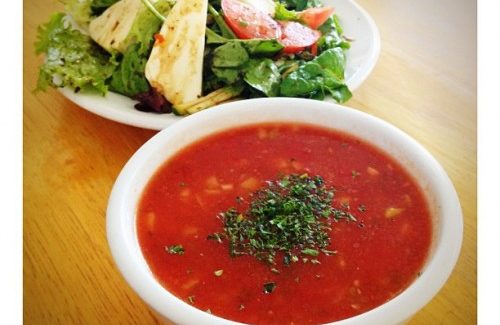
Diet Showdown- Volumetrics
01/29/2016
The Volumetrics diet, created by terrific research done by Dr. Barbara Rolls, focuses on feeling full or utilizing the volume and calorie density of foods. Volumetrics is ultimately about getting more mileage out of what you eat. Registered dietitian Sarah Downs tells us the details about this eating pattern.
What is the Volumetrics diet?
Sarah Downs: “Rated by U.S. News as the #8 in “Best Diets Overall,” the Volumetrics diet’s primary goal is sustainable weight loss. The theory is that people tend to eat the same amount or volume of food each day, regardless of how many calories they take in. Because most of the foods in this diet are low in calorie density, by filling up on these types of foods you will be consuming fewer calories without less food.”
What are high- and low-density foods?
Sarah Downs: “Energy density refers to the number of calories in a food compared to the volume/weight of the food.
High-density foods have a lot of calories for not much food and little nutrition. Examples of high-density foods are candies, cookies and chips.
Low-density foods have fewer calories with more food or volume. Examples of low-density foods include non-starchy fruits and veggies, non-fat milk and broth-based soups.
For example, a breakfast that includes eggs, whole wheat bread, fruit and milk have the same amount of calories as a breakfast of two donuts. The difference? The volume or weight in grams of the first breakfast is much larger than the donut breakfast, or more food for fewer calories.”
What can you eat? What can you not eat?
Sarah Downs: “There is no restriction within this eating plan, but you do need to be mindful of the energy density of foods. It includes eating three meals a day with a few snacks in between (and you can even have dessert!). There are four categories that different foods fit into:
- Category 1 includes “free” or “anytime” fruits, non-starchy vegetables (such as broccoli, tomatoes, mushrooms), and broth-based soups.
- Category 2 includes reasonable portions of whole grains (such as brown rice and whole wheat pasta), lean proteins, legumes, and low-fat dairy.
- Category 3 includes small portions of foods such as breads, desserts, fat-free baked snacks, cheeses, and higher-fat meats.
- Category 4 includes sparing portions of fried foods, candy, cookies, nuts, and fats.
The plan encourages people to base eating decisions on categories 1 and 2, have smaller portions of category 3 and keep those in category 4 to a minimum.”
What are the health benefits?
Sarah Downs: “The benefits to including more nutrient-dense foods include weight loss, improved heart health and improved overall health.”
Registered Dietitian Rating?
Sarah Downs: “B+ The Volumetrics Diet is not restrictive, promotes increased intake of fruits and vegetables, and is easy to follow. It also doesn’t abandon physical activity and encourages adding increased steps and movement each day in order to reach an ultimate goal of 10,000 steps a day.”


























